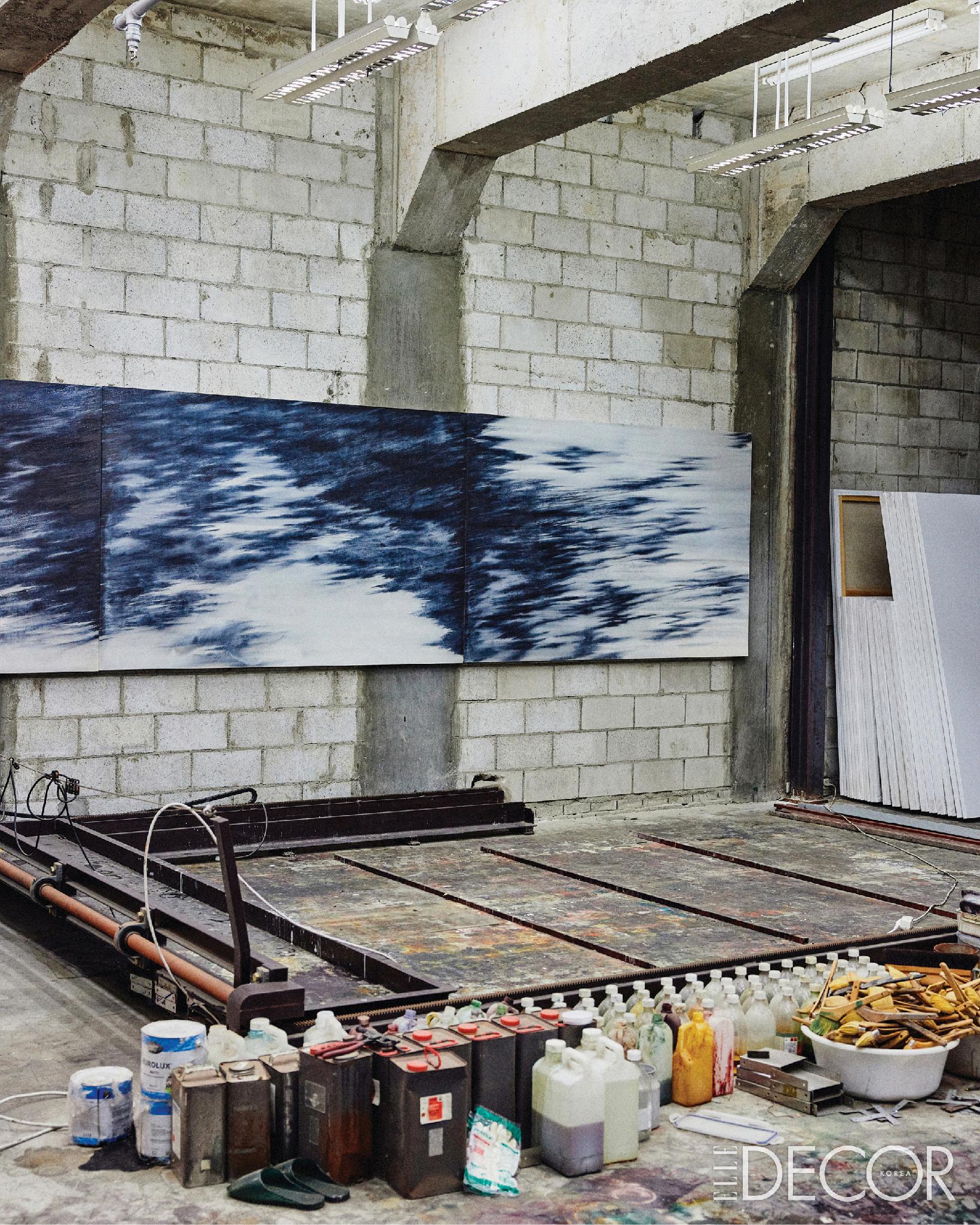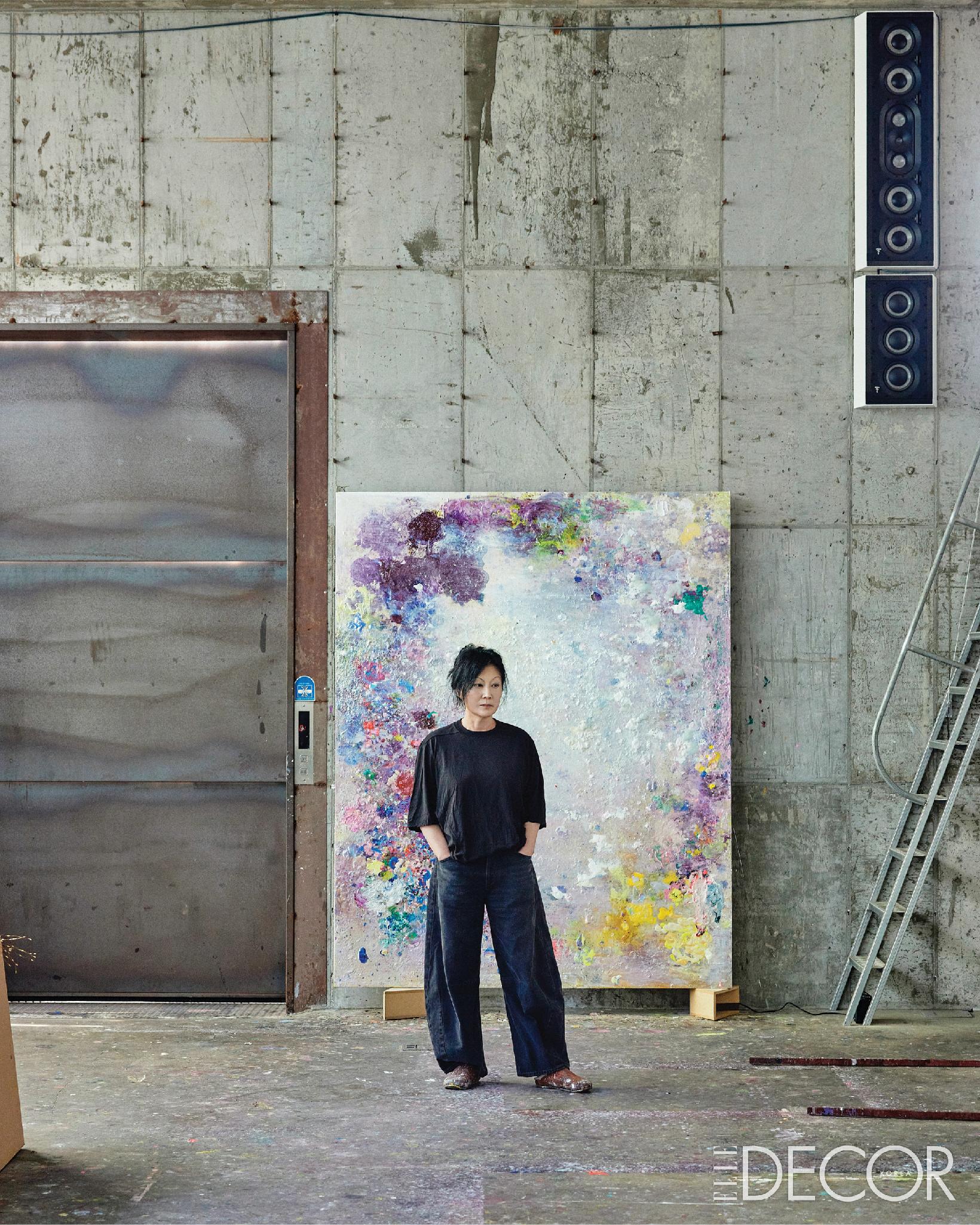
Yun-Hee Toh: Art as Shelter
– Editor: Yoon Jeong Hoon, Photographer: Lee Joo Yeon
A sanctuary for art and art alone—Yun-Hee Toh’s studio resembles her own works, which she paints to live and live to paint.
“My whole world dwells in two-dimensional plane.” Yun-Hee Toh pours her entire life into painting. For Toh, her paintings are her own self. Working between Seoul and Berlin, her studio in Seoul is located on the foothills of Pyeongchang-dong. Clad in tear-streaked concrete and rusted steel plates, the façade stands aloof like an old castle, testifying to times that have passed behind it. Born as the granddaughter of renowned artist To SangBong, Yun-Hee Toh was naturally exposed to the arts starting at an early age. To her, collecting beauty and rendering it in her own language comes effortlessly. The living space on the first floor is filled with antique furniture from her grandparents and cutlery of her own collection, while the basement and second floors brim with artworks mirroring the beauty that she so fervently pursues as an artist. “As soon as I step in and lock the steel doors, I become the freest soul in the world.” Looking around the space solely dedicated to painting with its almost 10-feet-high ceiling, freight elevator for transporting paintings, and paint-smeared floors, any visitor will realize that Toh’s proclamation that “to paint is to breathe” is no exaggeration.
It’s been almost two decades since you commissioned architect Min Kyeong-sik for this studio.
It took me some time to adjust to this place. My previous studio was quite different. I designed this one to suit my practice, but once I moved in, the raw concrete structure felt far more imposing than I had imagined. I wandered through its corners, meditating in search of harmony with the space. Now it feels entirely my own—familiar, and deeply mine.
You are renting a factory building as your studio in Berlin?
I believe true beauty is what pierces through barren soil. Unconditionally beautiful things tend to be futile—the beauty I speak of is different from “prettiness” or some kind of “trend.” Within every phenomenon—whether in people or in nature—there is a hidden poetry. To speak of beauty is to unearth and reveal it. This is why I have always said that my work is about ‘discovering the beauty that lies behind appearances.’”
What does your typical day here look like?
I wake up before sunrise to begin the day with meditation and stretching, then work until dusk–since colors change under artificial light. It’s a simple life, yet a busy one.
Are there times when you don’t paint?
I don’t think I’m the kind of person who compartmentalizes work and leisure. At times, it even carries into my dreams. It’s not that I create art in my sleep, but rather that I sometimes witness truly marvelous works there.
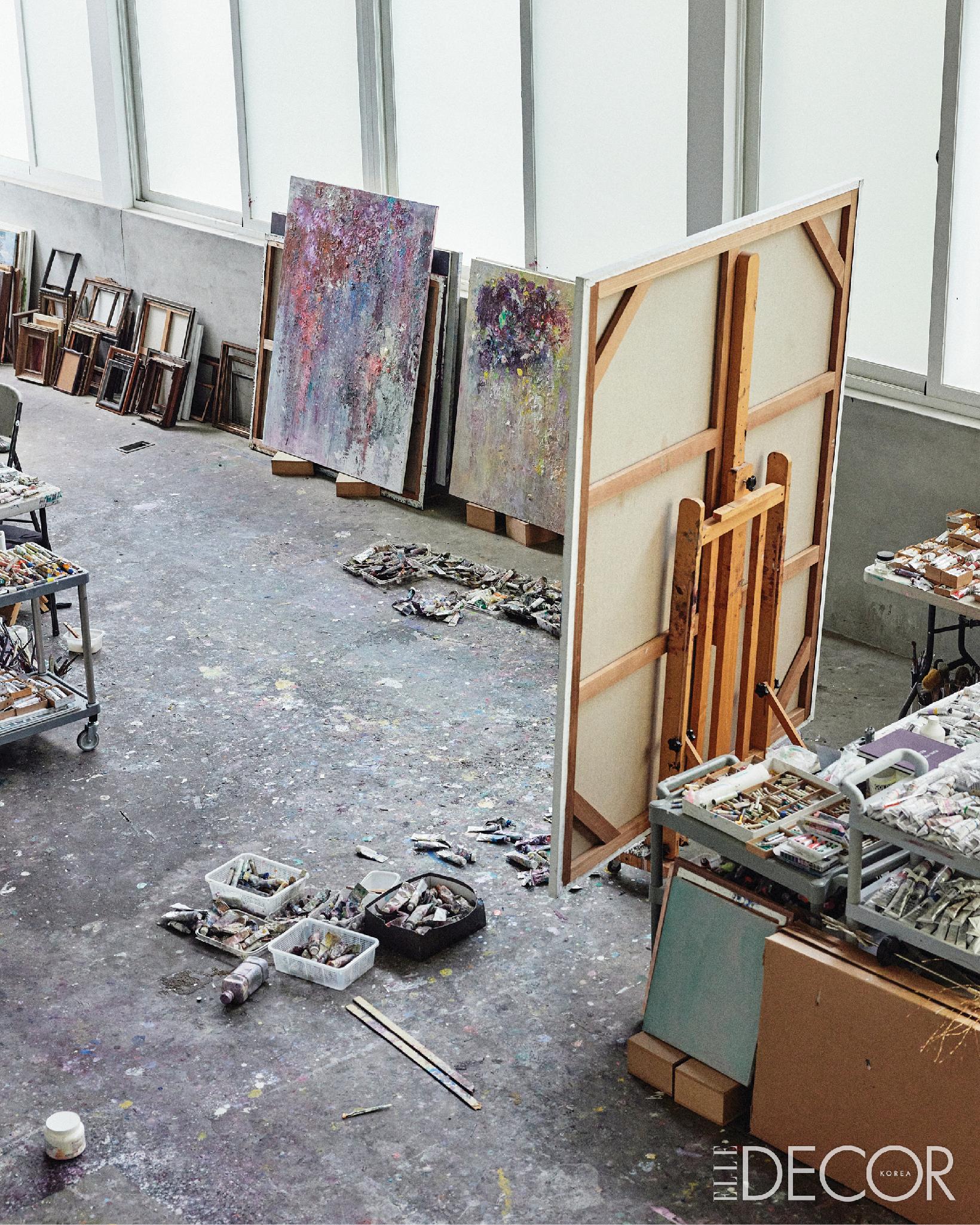
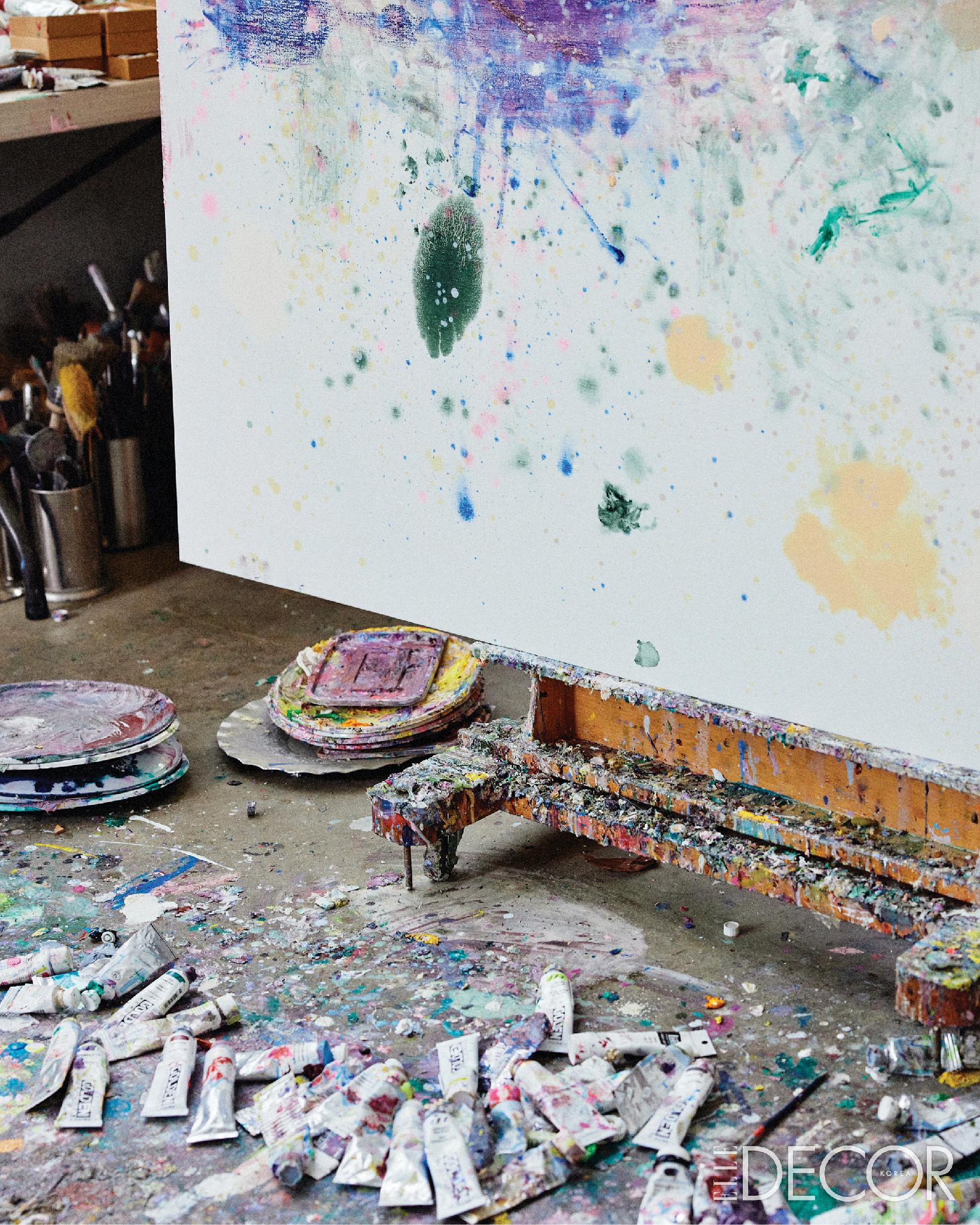
You initially used pencil and varnish in restrained colors and met a turning point in 2015 when you started using more varied palettes. Do you still crave for something new?
I feel as though my desires have gained momentum. Artists are bound to the desire to make “good work” their entire lives, after all. No matter how satisfying something once was, once you’ve tasted it, you can’t help but want more.
You have once stated, “my work contains emotions more bare and intimate than any spoken word or text.”
In my practice, I expend sensuality itself—I enter a state of immersion that surpasses emotion. When my spirit is materialized through the body, it leads to entirely unexpected results. This is why I would describe my art as the reflection of my inner reality, while exhibitions become the act of laying that inner life bare to others. Naturally, interpretations differ: some conceive them as a form of beauty, while others may recall distant landscapes within their own consciousness. For me, the appreciation of art does not concern knowledge. If someone standing before a painting becomes absorbed—even for just a few seconds—that, to me, is enough. It is already a journey into the work: to dwell in its corners, or to venture into an entirely new dimension.
I recall watching a video of your process. You stand two or three steps away from the canvas and wave your hands mid-air like a conductor—then you suddenly lunge forward.
I see it as a warm-up to the process I mentioned earlier, where the body helps materialize my inner world into painting. It’s similar to jotting down poetic concepts as they come to mind. This desire for immediacy is what led me to enlist bare hands in the process. I also work with the tips of broken brushes, glass bottles, hammers, and nails.
That also makes me wonder about your standard for choosing these tools. You sometimes tear paint off the canvas, and I am curious what the intention is.
The sensation I wish to convey becomes the guiding principle. For instance, if I need a sunken element within the composition, I press the surface with an awl and fill the imprint with paint. Shaving away paint produces a similar effect. Layering paint repeatedly triggers a chemical process that leads to rough textures and forms—what traditional ottchil (lacquer) artisans called “chilsal”(translator’s note: direct translation is “brushed flesh”). By manipulating this “sal,” the flesh, I can introduce contrast into the work.
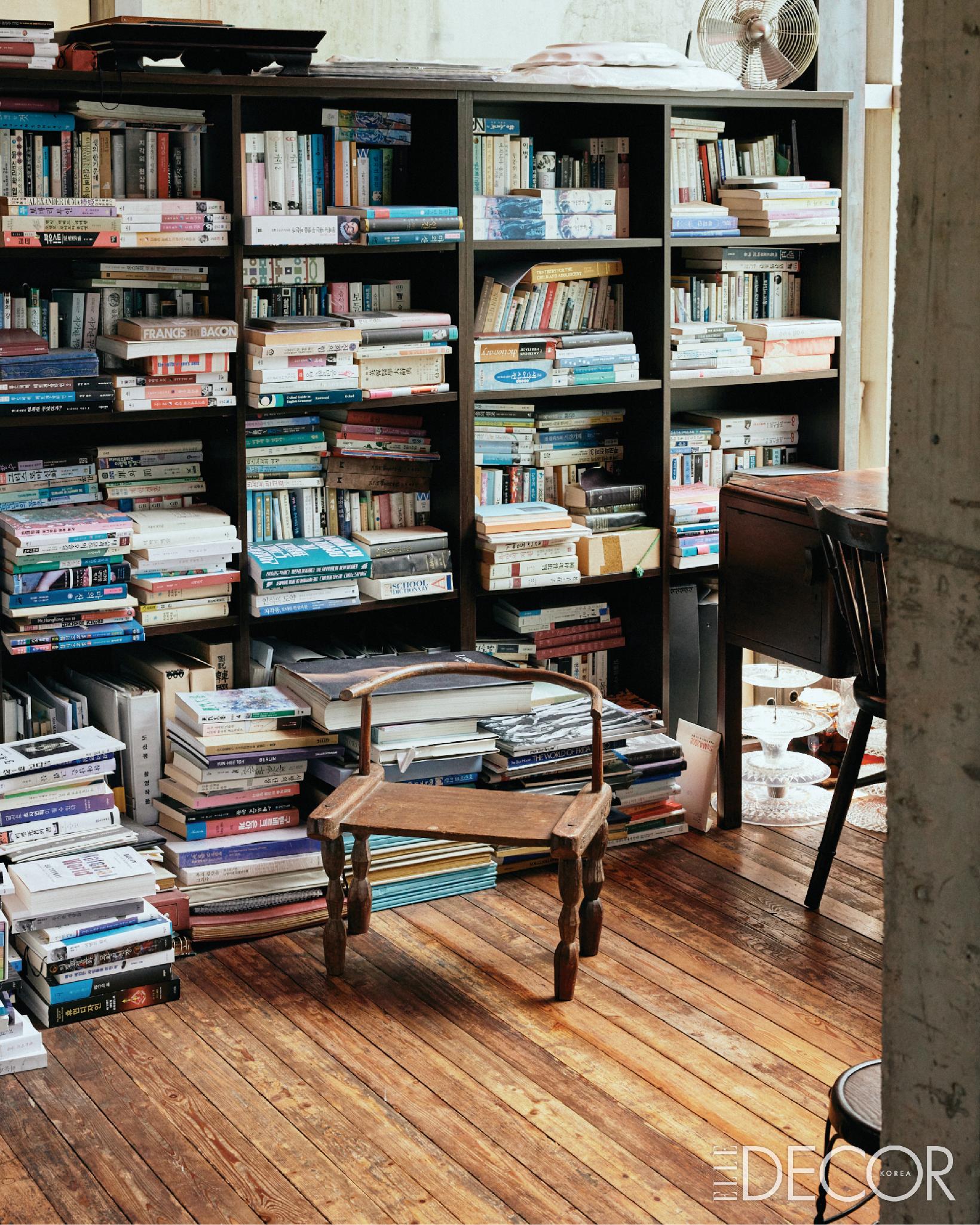
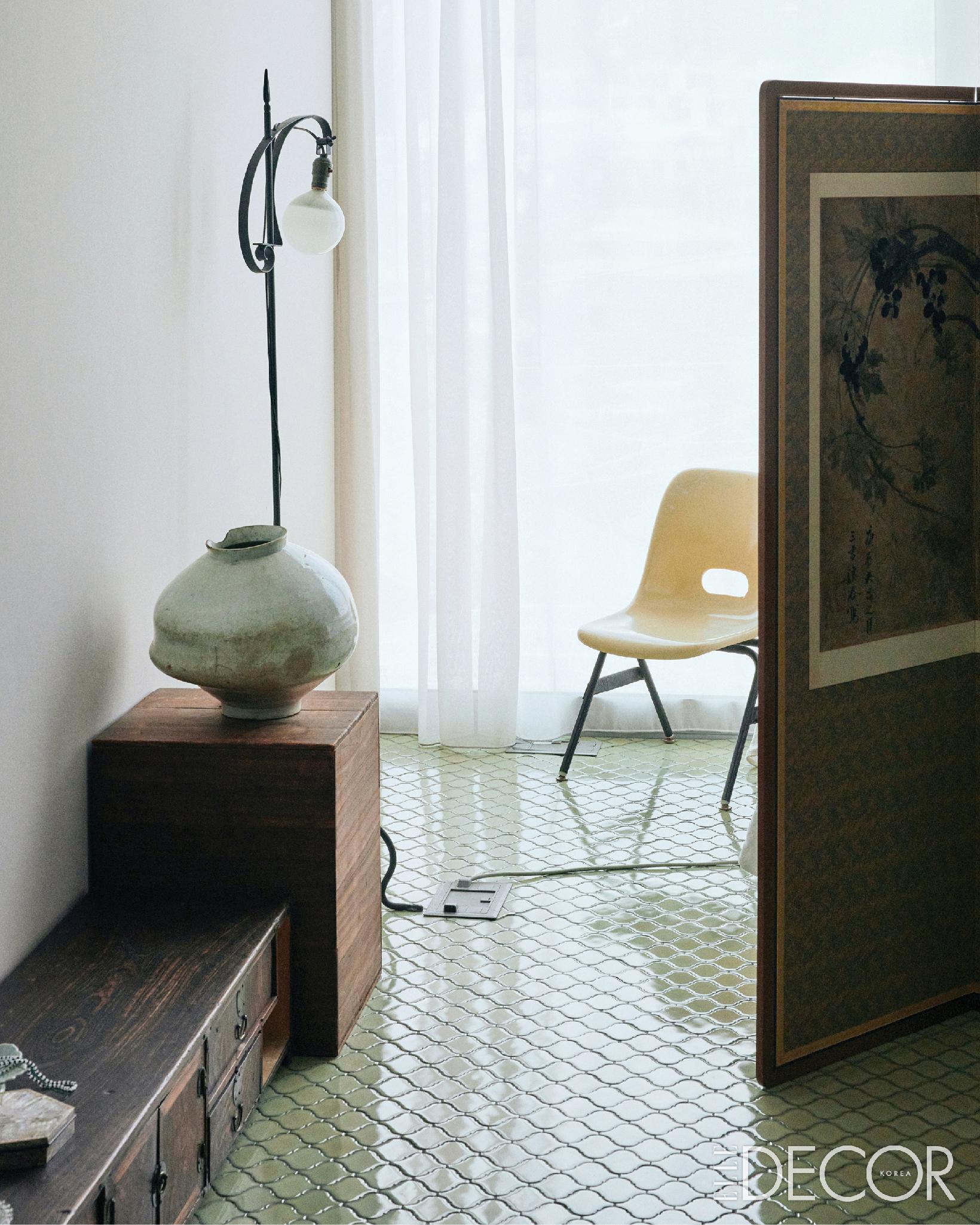
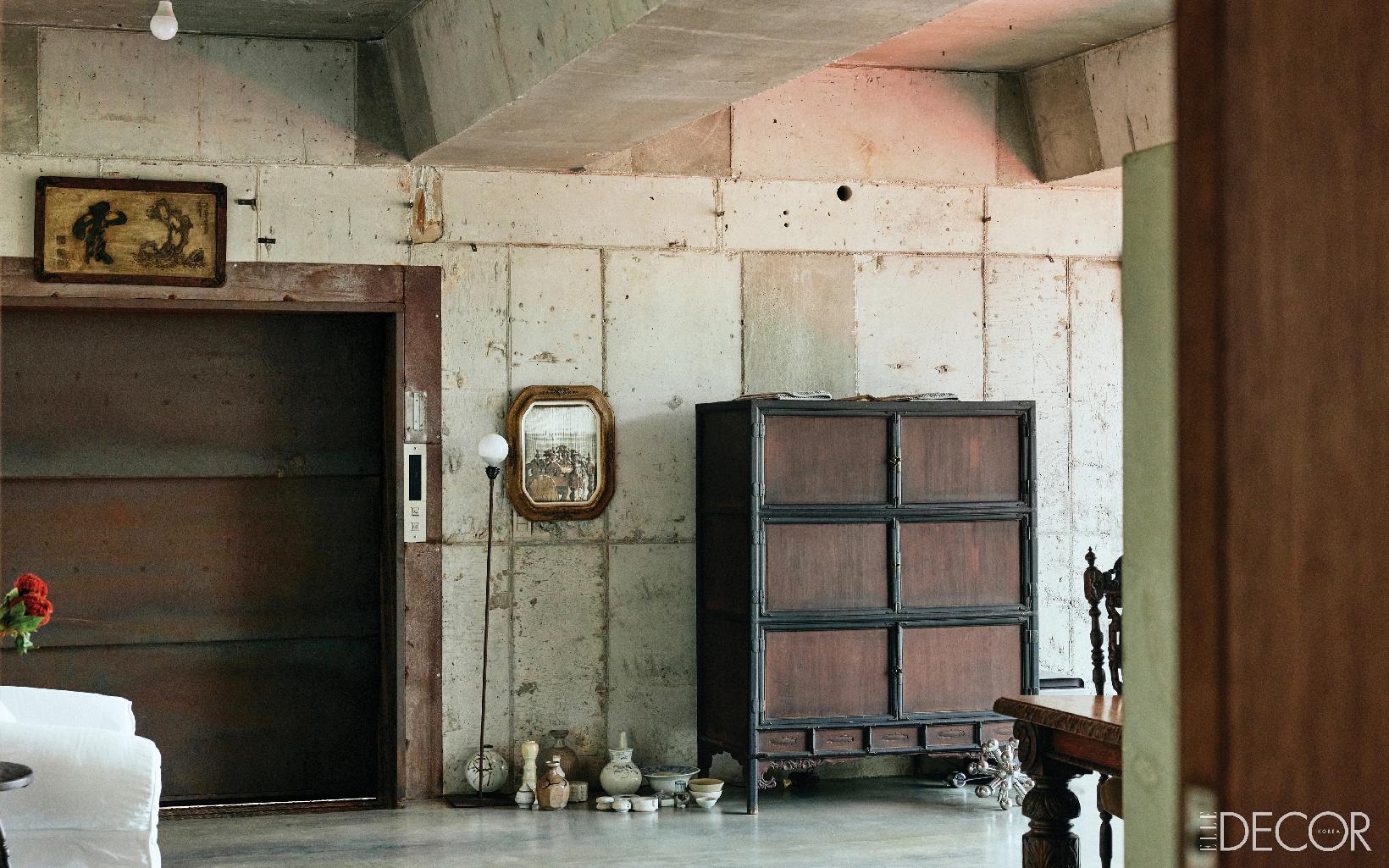
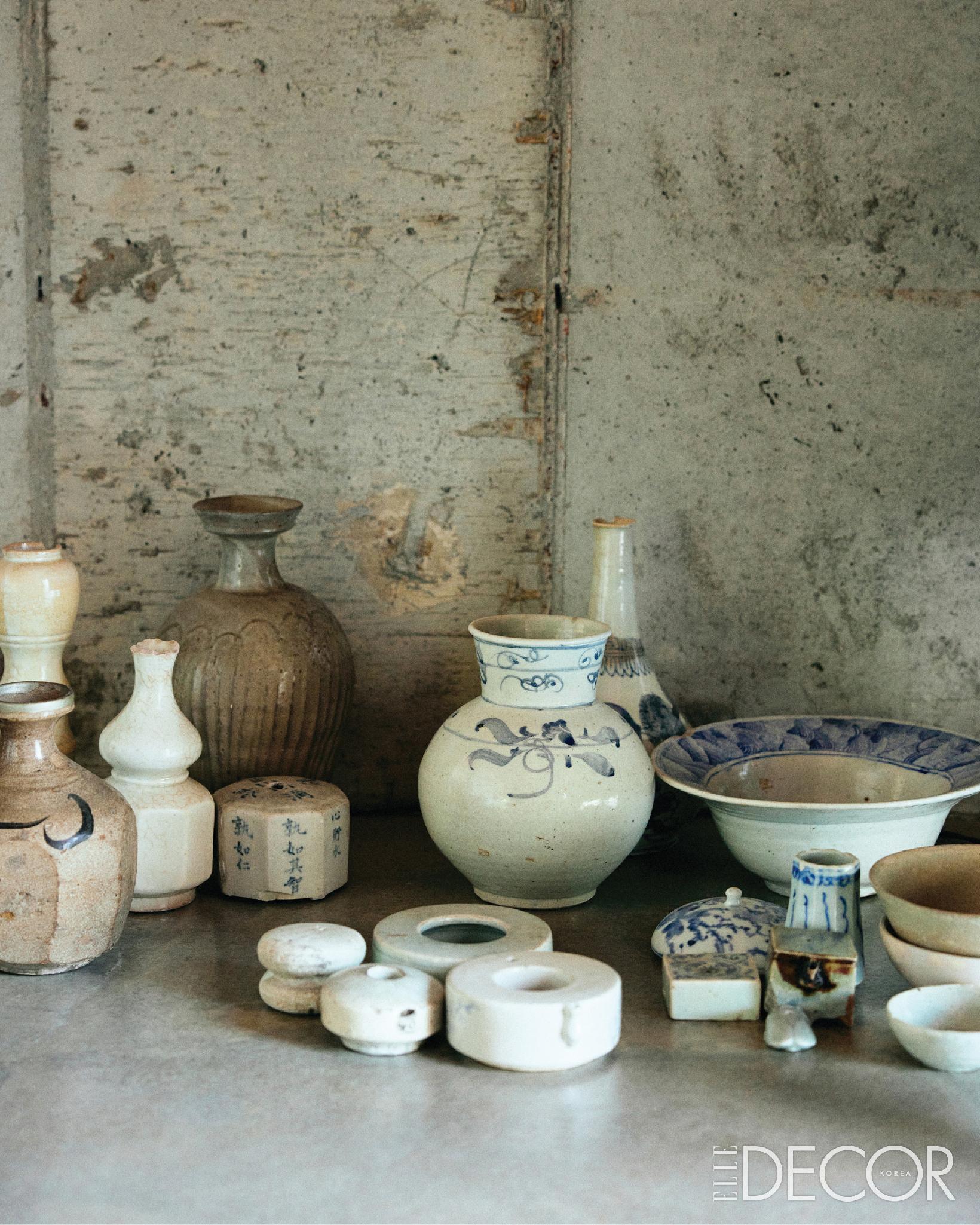
You spent almost forty years as an artist. How has your search for beauty transformed along the journey?
In the beginning, the aged quality of antique furniture or ceramics evolved into my paintings. Now, anything can become a subject, even the most mundane things I encounter on a walk. I remember looking into a trashcan on the streets of Berlin, where I saw a discarded cookie wrapper caught by sunlight, its colors glowing with such intensity—it was breathtaking. Moments like these quietly accumulate in my unconscious and find their way, indirectly, back into my work.
Have you ever imagined yourself as someone other than an artist?
I might have been a gypsy (laughs). I am grateful simply to be able to paint. Even the smallest gift of talent or aptitude as a painter, I believe, comes within its own responsibility. There are many challenges and pains in the process of making art, but I don’t feel the need to parade them around.
What do you do when you are stuck?
Pausing only makes it harder. That’s why I don’t stop. Even when I feel I’ve ruined something, I push it through to the end.
And then there are moments of reversal, aren’t there? For example, the instant a single dot brings a work to life.
In those moments, I feel the painting comes alive. That a single dot or line can change an entire universe. Sometimes, after letting a work sit for two or three years, returning to it can make it feel entirely new.
You have mostly worked large-scale, at least five feet high. What does scale signify in your work?
If smaller works feel like I am simply “making” them, larger works feel as though I am living within them, since every gesture and ounce of energy I have is poured into the process.
Do you think physical labor and accumulated time lead to better art?
Absolutely—it really does. Painting, in particular, is never “cool” about time. Through repetition, a work gradually yields insight.
Nowadays, we are deluged by fictional digital images including AI. Anyone can create images, and they become increasingly confounded with real images. In this day and age, what is the meaning of painting?
For me, abstraction is about enriching reality through metaphors and revealing hidden meanings that divulge new dimensions—allowing us, in a sense, to reconcile with the world. I see the role of contemporary painting as one of balance. When the world leans too far in one direction, it can pull from the other side, reminding us that some things remain constant.
